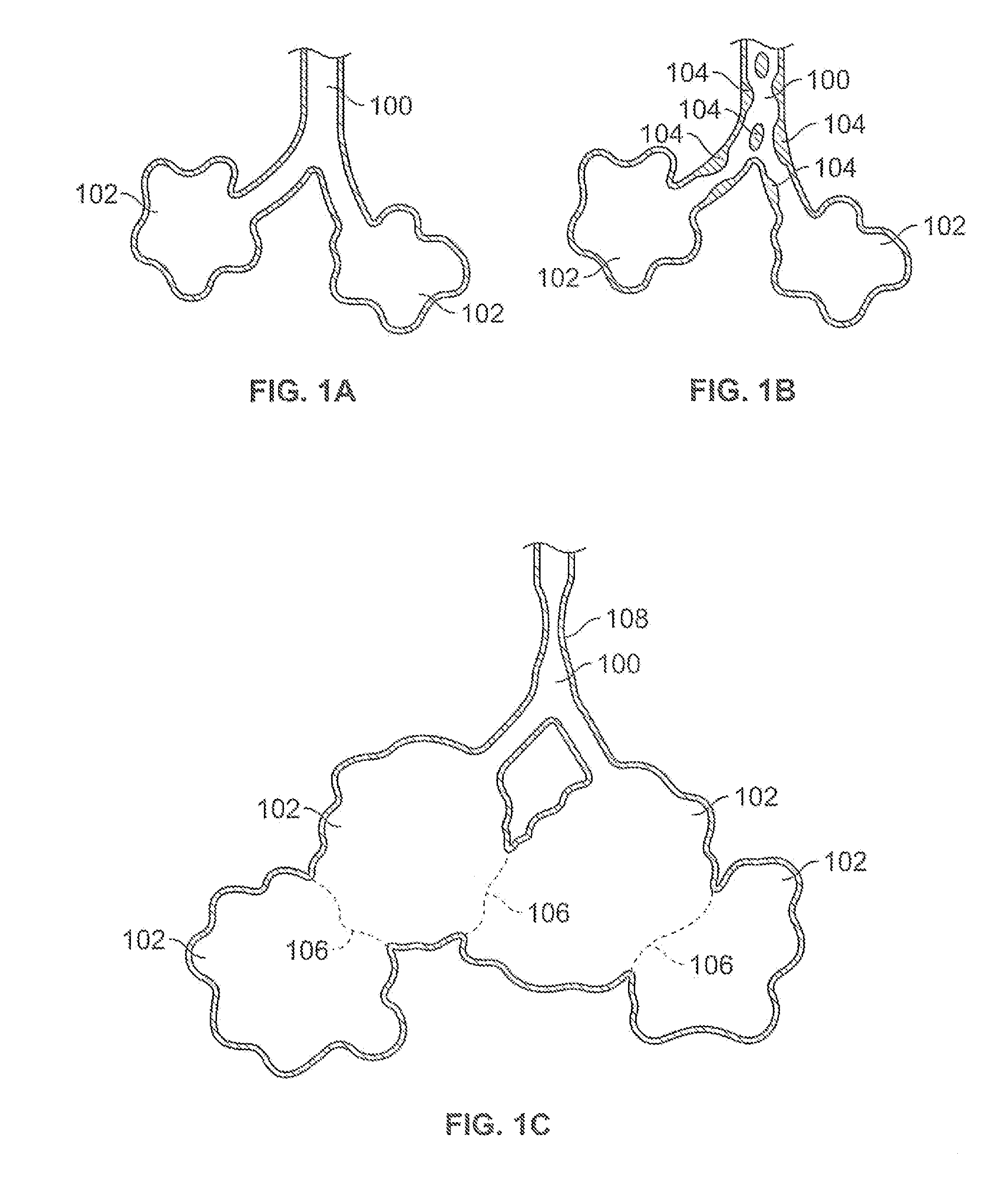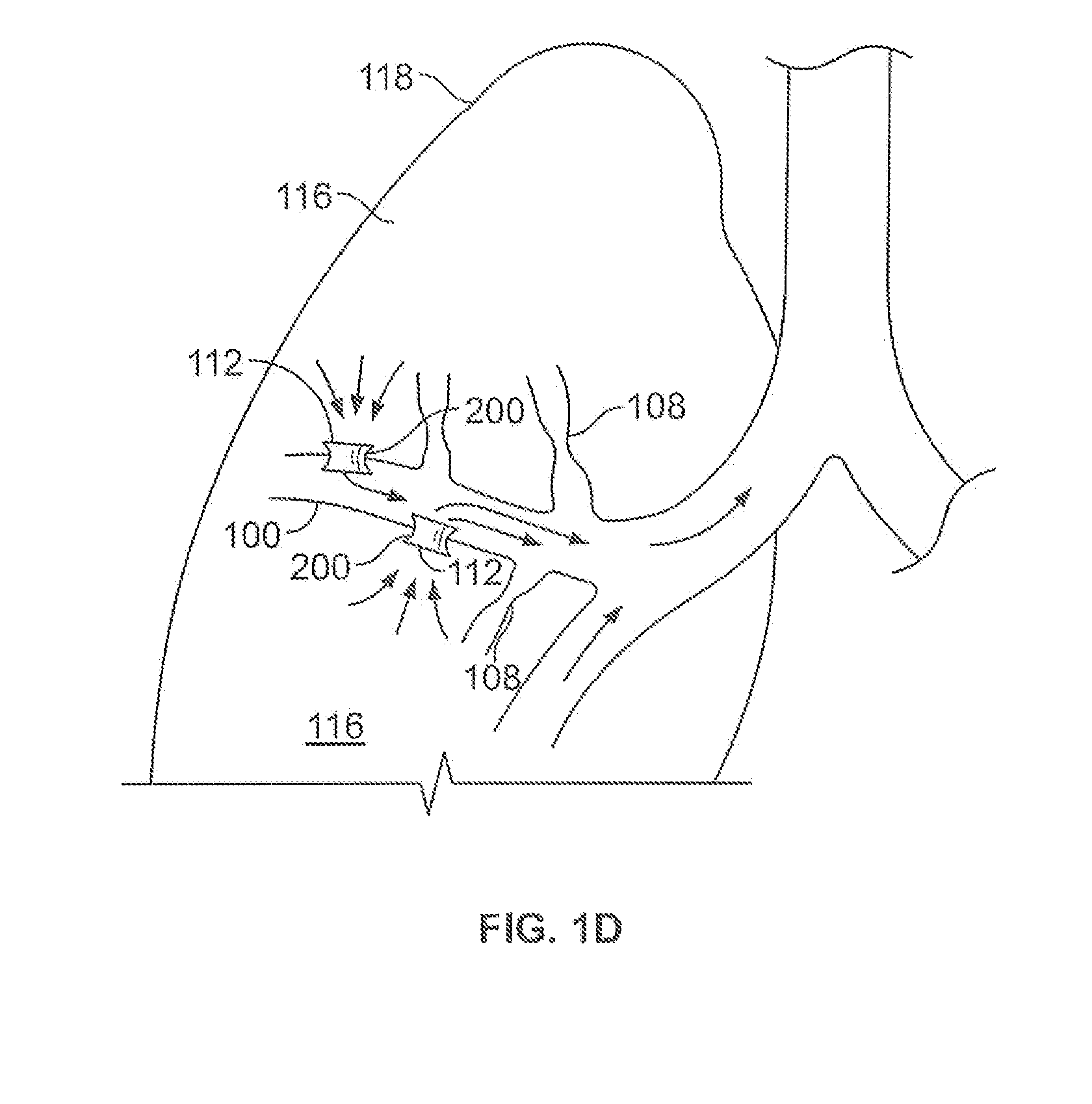Airway bypass site selection and treatment planning
a site selection and treatment planning technology, applied in the field of airway bypass site selection and treatment planning, can solve the problems of limiting the areas of the airway that are treatable, unable to access the target airway surface, and creating an extra-anatomic passage too close to the blood vessel is obviously not desired
- Summary
- Abstract
- Description
- Claims
- Application Information
AI Technical Summary
Benefits of technology
Problems solved by technology
Method used
Image
Examples
example 1
[0085]1. Identify the treatable regions of the 18 segmental segments in the 5 lobes of the lung for:
[0086]1.1 Airway diameter distance from mouth, articulation angles, and intraparenchymal margin to determine bronchoscopic access and treatable surfaces;
[0087]2. Once the treatable regions are identified, evaluate the vessel free locations by:
[0088]2.1 Tracking the branches of the pulmonary arteries and veins from the 2 arterial and 2 venous vessels entering and exiting the lung, then
[0089]2.2 Identifying locations within the treatable regions with sufficient distance from the pulmonary branches
[0090]3. Once the vessel free locations within the treatable regions are identified, evaluate the access to trapped gas by:
[0091]3.1. Determining the accessible parenchymal tissue density within local and regional volumes
[0092]3.2. Ranking the treatment locations by local and regional tissue density
[0093]4. Creating a site road may to indicate to the bronchoscopist the preferred treatment locat...
example 2
[0094]1. Identify the regions of trapped gas, by:
[0095]1.1. Determining the local and regional parenchymal tissue densities throughout the lung
[0096]1.2. Rank ordering the regions
[0097]2. Evaluating transbronchial access paths to the trapped gas or collaterally ventilated regions by;
[0098]2.1. Identifying the segmental airways communicating with the regions, and
[0099]2.2. Determining bronchoscopic access and the treatable regions within these segments.
[0100]3. Identifying the blood vessel free locations, by
[0101]3.1. Tracking the branches of the pulmonary arteries and veins from the 2 arterial and 2 venous vessels entering and exiting the lung, then
[0102]3.2. Identifying locations within the treatable regions with sufficient distance from the pulmonary branches
[0103]4. Creating a site road map to indicate to the bronchoscopist the preferred treatment locations.
[0104]The invention herein it described by examples and a desired way of practicing the invention is described. However, the...
PUM
 Login to View More
Login to View More Abstract
Description
Claims
Application Information
 Login to View More
Login to View More - R&D
- Intellectual Property
- Life Sciences
- Materials
- Tech Scout
- Unparalleled Data Quality
- Higher Quality Content
- 60% Fewer Hallucinations
Browse by: Latest US Patents, China's latest patents, Technical Efficacy Thesaurus, Application Domain, Technology Topic, Popular Technical Reports.
© 2025 PatSnap. All rights reserved.Legal|Privacy policy|Modern Slavery Act Transparency Statement|Sitemap|About US| Contact US: help@patsnap.com



